
The Chinese Exclusion Act was a United States federal law signed by President Chester A. Arthur on May 6, 1882, prohibiting all immigration of Chinese laborers for 10 years. The law excluded merchants, teachers, students, travelers, and diplomats. The Chinese Exclusion Act was the first and only major U.S. law ever implemented to prevent all members of a specific national group from immigrating to the United States.

The California Gold Rush (1848–1855) was a gold rush that began on January 24, 1848, when gold was found by James W. Marshall at Sutter's Mill in Coloma, California. The news of gold brought approximately 300,000 people to California from the rest of the United States and abroad. The sudden influx of gold into the money supply reinvigorated the American economy; the sudden population increase allowed California to go rapidly to statehood in the Compromise of 1850. The Gold Rush had severe effects on Native Californians and accelerated the Native American population's decline from disease, starvation and the California genocide.

Rocklin is a city in Placer County, California, about 22 miles (35 km) from Sacramento, and about 6.1 miles (9.8 km) northeast of Roseville in the Sacramento metropolitan area. Besides Roseville, it shares borders with Granite Bay, Loomis and Lincoln. As of the 2010 census, Rocklin's population was 56,974. The California Department of Finance placed the 2019 population at 68,823.

The Geary Act was a United States law that extended the Chinese Exclusion Act of 1882 by adding onerous new requirements. It was written by California Representative Thomas J. Geary and was passed by Congress on May 5, 1892.
Yick Wo v. Hopkins, 118 U.S. 356 (1886), was the first case where the United States Supreme Court ruled that a law that is race-neutral on its face, but is administered in a prejudicial manner, is an infringement of the Equal Protection Clause in the Fourteenth Amendment to the U.S. Constitution.
The People of the State of California v. George W. Hall or People v. Hall, 4 Cal. 399, was an appealed murder case in the 1850s, in which the California Supreme Court established that Chinese Americans and Chinese immigrants had no rights to testify against white citizens. The opinion was delivered in 1854 by Chief Justice Hugh Murray with the concurrence of Justice Solomon Heydenfeldt and the dissent of Justice Alexander Wells.

The Immigration Act of 1917 was a United States Act that aimed to restrict immigration by imposing literacy tests on immigrants, creating new categories of inadmissible persons, and barring immigration from the Asia-Pacific zone. The most sweeping immigration act the United States had passed until that time, it followed the Chinese Exclusion Act of 1882 in marking a turn toward nativism. The 1917 act governed immigration policy until it was amended by the Immigration Act of 1924; both acts were revised by the Immigration and Nationality Act of 1952.

Frank Chin is an American author and playwright. He is considered to be one of the pioneers of Asian-American theatre.

The history of Chinese Americans or the history of ethnic Chinese in the United States includes three major waves of Chinese immigration to the United States, beginning in the 19th century. Chinese immigrants in the 19th century worked in the California Gold Rush of the 1850s and the Central Pacific Railroad in the 1860s. They also worked as laborers in Western mines. They suffered racial discrimination at every level of society. The white people were stirred to anger by the "Yellow Peril" rhetoric. Despite provisions for equal treatment of Chinese immigrants in the 1868 Burlingame Treaty between the U.S. and China, political and labor organizations rallied against "cheap Chinese labor".
On February 19, 1862, the 37th United States Congress passed An Act to Prohibit the "Coolie Trade" by American Citizens in American Vessels. The act, which would be called the Anti-Coolie Act of 1862 in short, was passed by the California State Legislature in an attempt to appease rising anger among white laborers about salary competition created by the influx of Chinese immigrants at the height of the California Gold Rush. The act sought to protect white laborers by imposing a monthly tax on Chinese immigrants seeking to do business in the state of California.
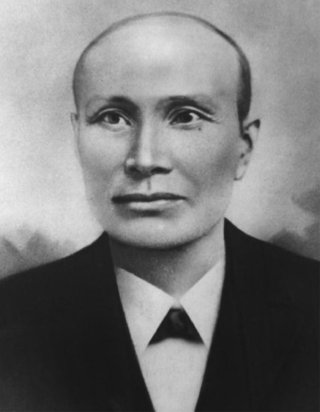
Chin Lin Sou was an influential leader in the Chinese American community and prominent figure in Colorado. He immigrated to the United States from Guangzhou, China, in 1859. Chin stood out amongst other Chinese immigrants at the time as he dressed like a westerner and spoke perfect English. He was a supervisor of hundreds of Chinese workers who built the transcontinental railroad and feeder lines across California, Utah, Nevada, Wyoming, and Colorado.
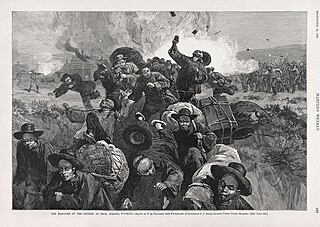
The Rock Springs massacre, also known as the Rock Springs riot, occurred on September 2, 1885, in the present-day United States city of Rock Springs in Sweetwater County, Wyoming. The riot, and resulting massacre of immigrant Chinese miners by white immigrant miners, was the result of racial prejudice toward the Chinese miners, who were perceived to be taking jobs from the white miners. The Union Pacific Coal Department found it economically beneficial to give preference in hiring to Chinese miners, who were willing to work for lower wages than their white counterparts, angering the white miners. When the rioting ended, at least 28 Chinese miners were dead and 15 were injured. Rioters burned 78 Chinese homes, resulting in approximately $150,000 in property damage.
Chinaman is a term referring to a Chinese man or person, a Mainland Chinese national or, in some cases, a person native to geographical East Asia or of perceived East Asian race. While the term has no negative connotations in older dictionaries and the usage of such compound terms as Englishman, Scotsman, Frenchman, Dutchman, Irishman, and Welshman are sometimes cited as unobjectionable parallels, the term is noted as having pejorative overtones by modern dictionaries. Its derogatory connotations evolved from its use in pejorative contexts regarding Chinese people and other Asians as well as its grammatical incorrectness which resembles stereotypical characterizations of Chinese accents in English-speaking associated with discrimination. While usage of the term Chinaman is nowadays strongly discouraged by Asian American organizations, it has also been used as a self-referential archetype by authors and artists of Asian descent. It may have come from literal translation into English of the Chinese term for "Chinese man/person", 中国人 = "China man/person".

The Scott Act was a United States law that prohibited U.S. resident Chinese laborers from returning to the United States. Its main author was William Lawrence Scott of Pennsylvania, and it was signed into law by U.S. President Grover Cleveland on October 1, 1888. It was introduced to expand upon the Chinese Exclusion Act passed in 1882 and left an estimated 20,000-30,000 Chinese outside the United States at the time of its passage stranded, with no option to return to their U.S. residence.
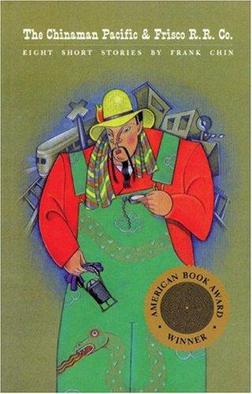
The Chinaman Pacific and Frisco R.R. Co. is a 1988 short-story collection by Frank Chin that collects many of the short stories he had published in the 1970s. It won the American Book Award. The collection deals with Chinese-American history by recalling the work of early Chinese immigrants in such jobs as "coolie, railworker and launderer".

Greater Seattle has had a Chinese American community almost since its founding in 1851. Chinese workers arriving in the 1860s were welcomed, because the Seattle area was sparsely settled and workers were needed; within a few decades, however, newly arrived white settlers resented the Chinese workers, and there were several anti-Chinese riots as the whites attempted to expel the Chinese from the area. Chinese settlement persisted, with the immigrants settling in a well-defined Chinatown where they maintained their culture through family groups, associations, and churches. In the mid-20th century Chinese Americans joined with other immigrant groups to oppose racial discrimination. In 1962 a Chinese American became the first person of Asian ancestry to hold elective office in the state of Washington.
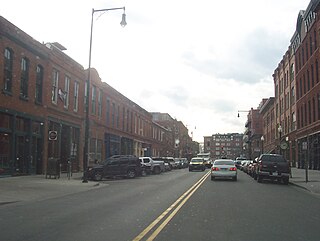
Chinatown in Denver, Colorado, was a residential and business district of Chinese Americans in what is now the LoDo section of the city. It was also referred to as "Hop Alley", based upon a slang word for opium. The first Chinese resident of Denver, Hong Lee, arrived in 1869 and lived in a shanty at Wazee and F Streets and ran a washing and ironing laundry business. More Chinese immigrants arrived in the town the following year. Men who had worked on the construction of the first transcontinental railroad or had been miners in California crossed over the Rocky Mountains after their work was completed or mines were depleted in California.
Chinese Americans in the Pacific Northwest have been around since as early as the 1850s. Chinese Americans arrived in the Greater Seattle area in as early as 1851. Oregon had also seen an influx of Chinese Immigrants as early as 1851, because of mining opportunities. Idaho saw an influx of Chinese Immigrants in the late-19th century, and by 1870 saw a population of around 4,000 Chinese immigrants. The influx of Chinese immigrants in the Pacific Northwest and the rest of the Western United States led to retaliation by whites, leading to anti-Chinese sentiment in the United States. These sentiment then led to the Chinese Exclusion Act of 1882, which expelled many Chinese Americans in the Pacific Northwest. Chinese exclusion is also driven by the failure of restriction. The United States had passed the Chinese Exclusion Act of 1882 to slow immigration, and mend Sinophobia in the west. However, the enforcement of the exclusion act was lackluster. The United States Department of Treasury had found itself with no money to enforce this law. Thus, nullifying the purpose of the exclusion act. Additionally, under the Chinese Exclusion Act of 1882, Chinese people could migrate to the United States if they were return immigrants. Consequently, Chinese immigrants began claiming that they were return immigrants so that they could work in the United States. This also made the Chinese Exclusion Act 1882 useless. This led the United States government to pass the Scott Act of 1888. This excluded all Chinese immigration because it was cheaper, and it appeased the racial tensions in the west.
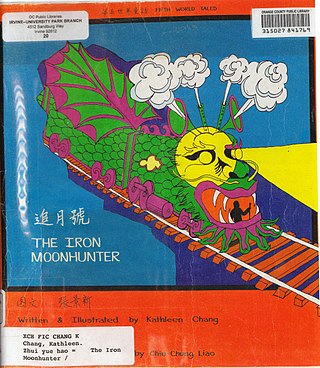
The Iron Moonhunter is a short children's picture book published in 1977, written and illustrated by the activist Kathleen Chang. The book purportedly retells a Chinese-American myth set in the Sierra Nevada mountains during the construction of the First transcontinental railroad, starting in the fall of 1866.
People of Chinese descent have lived in Colorado since the mid-nineteenth century, when many immigrated from China for work. Chinese immigrants have made an undeniable impact on Colorado's history and culture. While the Chinese moved throughout the state, including building small communities on the Western Slope and establishing Chinatown, Denver, the presence of Chinese Coloradans diminished significantly due to violence and discriminatory policies. As of 2018, there were 45,273 Chinese Americans living in Colorado.
















